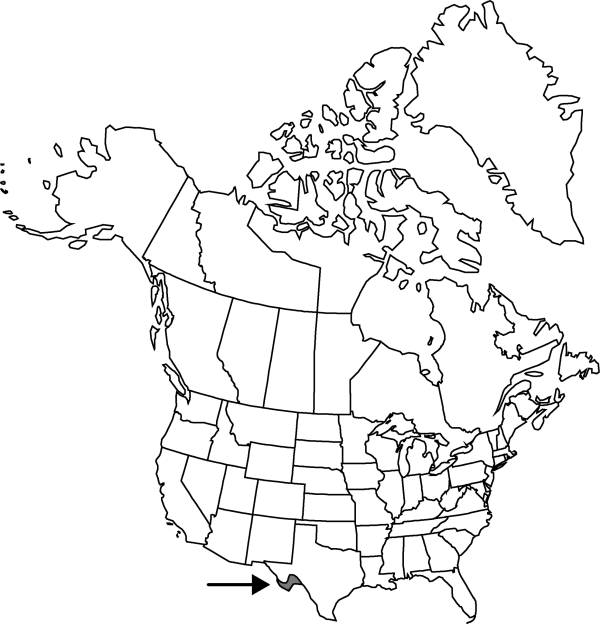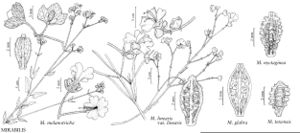Mirabilis texensis
Phytologia 75: 449. 1994.
Stems erect or ascending, few, sparsely leafy mostly in proximal 1/2, well branched, 5–10 dm, glabrate to sparsely spreading viscid-pubescent throughout, more densely so distally. Leaves ascending to spreading at 45–80°, abruptly reduced in inflorescence; petiole 0.3–4 cm; blade green, triangular-ovate to ovate, 2–7 × 2–7 cm, thick and moderately fleshy, base round to cordate, apex acute to rounded, surfaces glabrate to glandular. Inflorescences terminal and in distal axils, few branched, ± evenly forked, open; peduncle 2–6 mm, spreading viscid-pubescent, crosswalls of hairs pale or dark; involucres pale green, widely bell-shaped to almost rotate, 3–4 mm in flower, 6–13 mm in fruit, sparsely spreading viscid-pubescent, 90–100% connate, lobes round to very broadly obtuse. Flowers 2–3 per involucre; perianth pale pink to pink, 0.8–1 cm. Fruits reddish brown to brown, obovoid, 3–4 mm, densely glandular-puberulent with hairs 0.1 mm; ribs low and round, as wide as sulci, 0.5 times as wide as high, covered with tall, shelflike tubercles; sulci with prominent shelflike tubercles.
Phenology: Flowering summer and early fall.
Habitat: Limestone slopes among xerophytic scrub
Elevation: 600-900[-1600] m
Distribution

Tex., Mexico (Chihuahua, Coahuila, Durango).
Discussion
I. M. Johnston (1944) and B. L. Turner (1993b) noted the similarity of Mirabilis texensis to the weedy Mexican M. glabrifolia (Gomez Ortega) I. M. Johnston, rather than M. viscosa, with which it was associated by P. C. Standley (1918). Plants in Texas referred to as M. glabrifolia in floras and plant lists are M. texensis.
Selected References
None.
